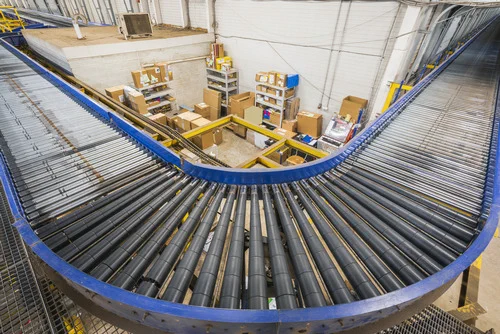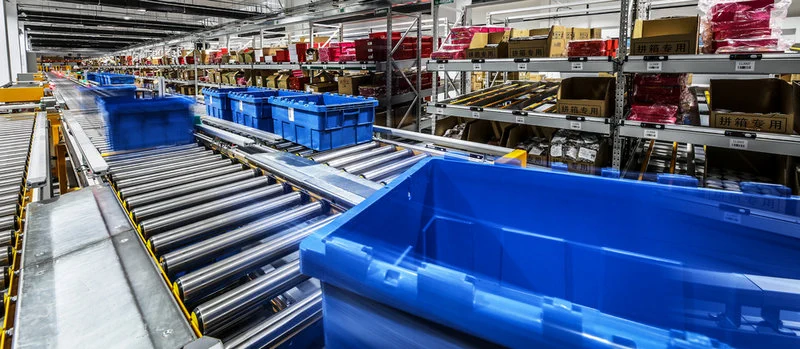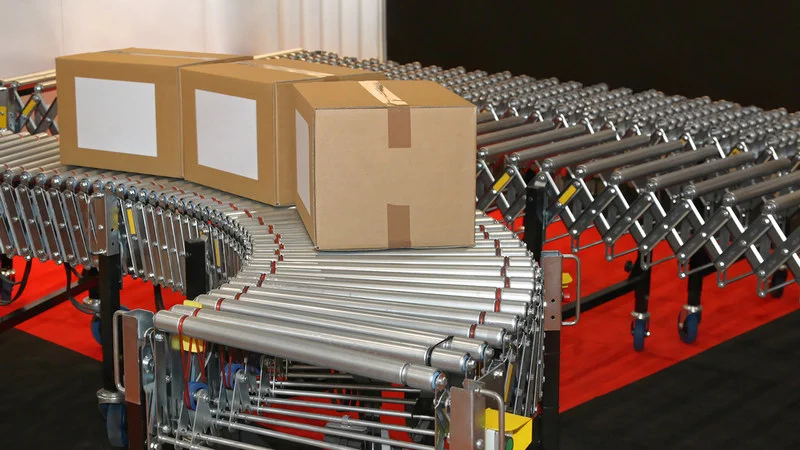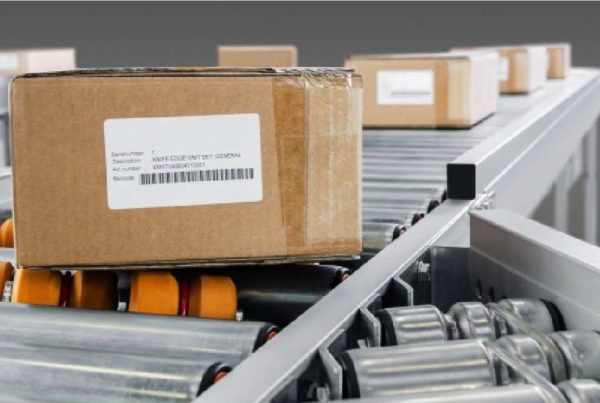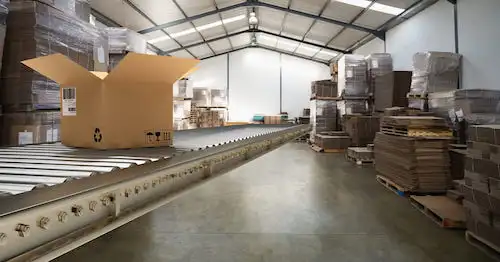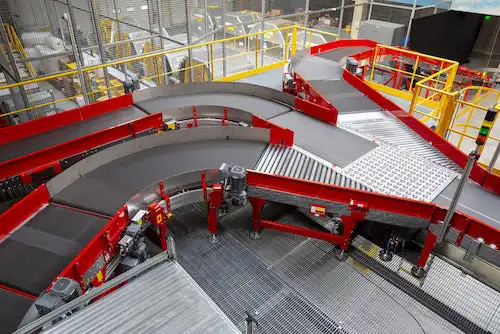If you’re looking for a way to make material handling easier in your company, you should consider investing in automated conveyor systems. Commercial and industrial conveyor systems can improve your operational efficiency, ensuring you manage your goods seamlessly, reduce accidents and reach your customers quickly. Their versatility makes them ideal for any industry, including yours. Let’s take a look at why.
What is an automated conveyor system?
A conveyor system is a technology that conveys goods from one part of the warehouse/production site to another. When this conveyor system is automated and not manually operated, it is called an automated conveyor system.
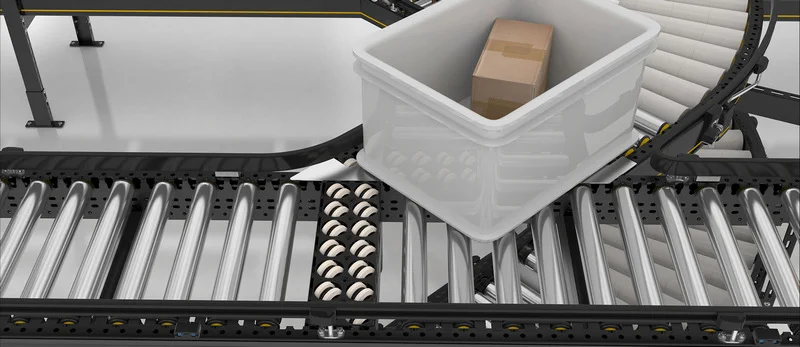
Many automated warehouse conveyor systems also come built with sortation systems. These automated sortation conveyor systems not only transport products from one place to another, but also direct products to their respective assembly, packaging, or disposal stations.
Which industries usually use conveyor systems?
Most industries that deal with any type of raw materials, semi-finished parts and finished products use commercial and industrial conveyor systems. These conveyor systems are often used to:
- Prepare containers/parts through cleaning, steaming, cooling, or other processes.
- Move raw materials quickly from one stage of production to another.
- Quickly sort through inventory and send batches of goods to their respective processing zones.
- Transfer goods from the production line to the packaging/transport line.
- Facilitate easier manual/robot-assisted quality checks of goods in bulk.
- Reduce dependency on labor and time wastage.
Now that we know what automated conveyor systems are, let’s understand them better.
Deep diving into conveyor systems
How does a conveyor system work?
Automated conveyor and sortation systems are constructed using the pulleys, drive unit and belts. This belt is stretched over two pulleys – the idler pulley and drive pulley. While the idler pulley gives the belt the tension, the drive pulley tows the belts in a continuous loop, in the desired direction. This way, the belt keeps moving.
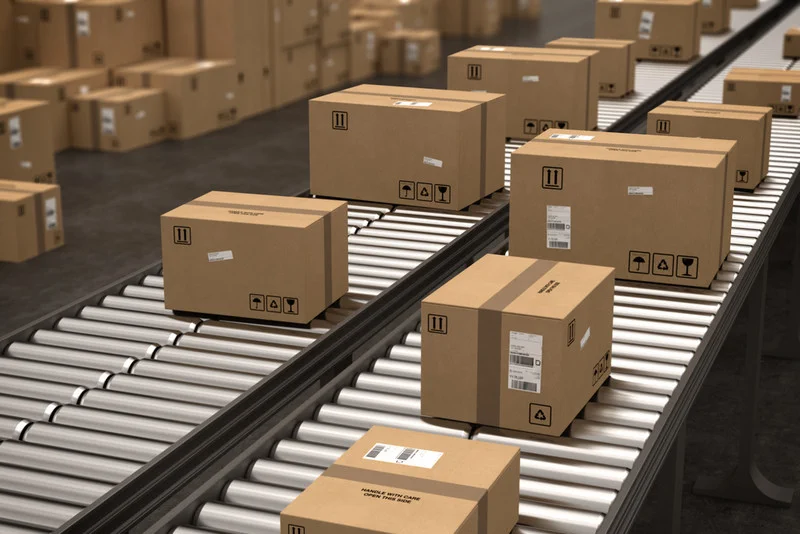
The power behind the pulleys differs based on the type of conveyor system you choose, but most often, a rotor is used to run the pulleys. To ensure the conveyor belts do not sag while running and heavy goods are provided adequate support over long distances, rollers are placed. If the conveyor belt needs to follow a twisted route through the warehouse, specially-designed conical rotors are attached at the turn to ensure the belt doesn’t tear, get tangled, or drop the goods.
The speed with which automated conveyor systems travel depends on the weight of the goods to be carried, the complexity of the route, the size of the machine, and more.
The conveyor system industries have developed tremendously in the past decade and SRSI partners with global leaders to provide you a variety of lightweight and heavy-duty industrial conveyor systems, ideal for companies of all sizes.
Benefits of using a conveyor system
Automated warehouse conveyor systems offer numerous benefits to businesses of all types. Here are the key advantages you can expect from this material handling technology:
- Cut manual labor costs
Did you know that 70% of a business’s total costs pertain to labor expenses? When you use a manual conveying system for your materials and goods you need to hire more people so you can complete the job quickly. This large-scale hiring can increase your costs tremendously.
Alternatively, when you use automated conveyor systems, you only need to invest in one system to complete the job of 10, even 20 workers. These systems start from just a few hundred dollars, making them accessible for small firms too.
- Reduce human error & workplace injuries
Human workers are susceptible to fatigue. Workers may also lose their focus and accidentally drop goods worth thousands of dollars. They may slip, trip or fall by not paying attention to where they’re going. There can also be risks of on-site injuries and disabilities.

All of this makes it very risky for businesses that use manual methods to handle their materials extensively or transport their heavy goods across long distances.
Conveyor systems, on the other hand, do not require any human intervention or involvement, and as a result, do not pose the same risks.
- Free up space in the warehouse
Imagine if you did not have automated sortation conveyor systems. You would need to manually comb through each package to sort and pile the goods. This would mean you would need to set dedicated space aside on-site to do your sorting and piling.
This can be a very inefficient way to do your business. It is also one of the greatest contributors to workplace accidents. If you wanted to increase the number of worktables or add new machinery, you would need to expand the warehouse layout, which can be a major investment.
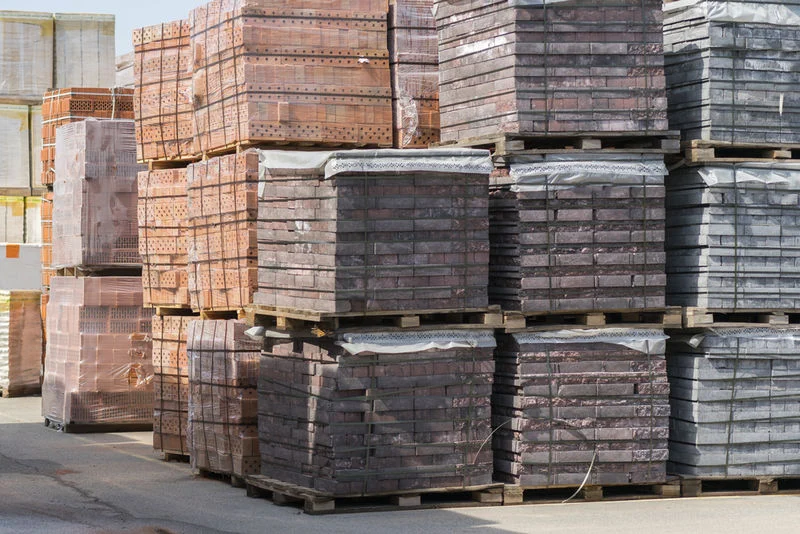
- Increase operational efficiency and productivity
Physically transporting goods across a warehouse can be a challenge. It can also waste a lot of time and employee effort, preventing you from achieving your business goals.
Using a truck to move your materials does not work all the time either because large material handling machinery may not be suitable for all types of storage spaces.
Both solutions can lead to operational inefficiency, bottlenecks, loss of productivity, and increased time to market.
Automated conveyor and sortation systems can help you meet your efficiency goals by giving you a solution that can speedily sort through and send goods to their respective stations.
- Provide immense flexibility in material transport
Some companies have a uni-directional conveyance requirement or a need for just straight belts without turns.
Other companies – especially those where the goods undergo a lot of production/processing – need industrial conveyor systems which can offer greater flexibility in terms of the belt dimensions, rotor capabilities, height of the machine, and degree of curvature.
Automated warehouse conveyor systems can give you the type of flexibility you need to ensure smooth operations. Our strategic partnerships with conveyor manufacturers allow for customized systems if your operational needs are unique.
Summing up
As we have seen above, automated conveyor systems can add a lot of value to your firm by:
- Preventing operational bottlenecks.
- Optimizing space utilization in the warehouse.
- Reducing on-site employee accidents & injuries.
- Limiting your labor costs.
- Providing a highly flexible material handling solution.
- Making your entire operations tremendously seamless.
This makes the investment in automated sortation conveyor systems worth it. Before we end, let’s look at a few use case examples which will help you understand just how helpful these systems are.
Use case examples
All industries use automated conveyor systems. Here are three examples of how they do so.
- Automated conveyor systems are used in the pharmaceutical and chemical formulation industries for quality sampling purposes. As the vials are sent along the conveyor belt from the formulation center to the next unit, a robot takes random samples. Instead of stopping the movement of the vials, the precise speed of the conveyor systems allows the robotic arm to reach down and collect the sample for quality check.
- Automated conveyor systems are also used in the food production industry. Here, the food item gets cooked on-the-go, while it is on its journey on the conveyor system. The conveyor system here is fitted with specialized technology to help cook the item thoroughly.
- Automated sortation conveyor systems are used in airports to transport passengers’ luggage to the right flights. These systems offer a high degree of flexibility since they need to carry the luggage all the way across the massive airport.
Contact one of our system solution specialists today to discuss the benefits of automated conveyor systems for your operations.
 Skip to main content
Skip to main content

